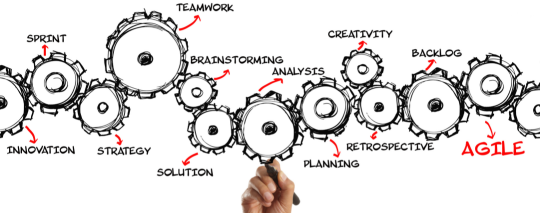Whether you’ve been in the tech industry for a while or you’re a newbie, you are probably aware there are different types of software and data storage options. Two of the most debated platforms are cloud and on-premise. In the past, on-premise (also known as onsite) software was the only option, but those days are long gone. The cloud has become increasingly popular over the years, and many software companies have completely moved away from onsite installation and physical data centers. There are pros and cons of both, but we’ll start with the basics.
Let’s break this down
It’s 2021 – we’ve all heard of the infamous cloud, but what exactly is it? Cloudflare, Inc., defines the cloud as “servers that are accessed over the Internet and the software and databases that run on those servers.” Basically, these servers are located in various data centers worldwide, meaning companies that use cloud software don’t have to worry about managing physical servers. The cost of using the cloud can vary because services can be scaled up or down, depending on needs. Subscription payments are made over time (usually monthly), but support and maintenance services are included, so annual contracts aren’t needed.
On the other hand, on-premise software is installed and maintained on local servers, which puts the company in charge of everything related to running the software. Going this route requires a larger investment upfront because, although user licenses are purchased once, additional costs add up. For example, network infrastructure, which includes hardware and resources that enable network communication, must be purchased. Other expenses include servers, power, operating systems, and anything else needed to safely maintain and update the software.
The pros and cons
When deciding which option is best, there are three key things to consider:
Budget: First, think about the costs associated with each one. Would you rather pay a monthly subscription fee with support fees included, or is it worth it to pay for the software license upfront and handle the extra expenses? It depends on the flexibility of the business’s budget.
Accessibility: Is your internet connectivity strong or limited? Since cloud software is hosted virtually, internet is a must. A bonus is this means it can be accessed from anywhere on almost any device, which is beneficial for companies with remote workers or multiple offices. Conversely, if your internet in unreliable, on-premise software would be easier to manage.
Responsibility: If you want complete control over your software maintenance, hardware, and data, you would choose on-premise. However, this also means your own IT team will be responsible for maintaining everything – server hardware, data backups, storage, and disaster recovery. If you prefer a more hands-off approach, cloud is your winner. Because it’s hosted for you by the cloud service vendor, everything is handled for you. Some consider this too much of a risk, while others prefer it. Either way, it’s extremely important that either IT teams for on-premise software users or cloud service providers stay on top of data backups and disaster recovery.





